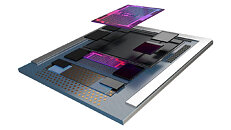
AMD Reports Second Quarter 2023 Financial Results, Revenue Down 18% YoY
AMD today announced revenue for the second quarter of 2023 of $5.4 billion, gross margin of 46%, operating loss of $20 million, net income of $27 million and diluted earnings per share of $0.02. On a non-GAAP basis, gross margin was 50%, operating income was $1.1 billion, net income was $948 million and diluted earnings per share was $0.58.
"We delivered strong results in the second quarter as 4th Gen EPYC and Ryzen 7000 processors ramped significantly," said AMD Chair and CEO Dr. Lisa Su. "Our AI engagements increased by more than seven times in the quarter as multiple customers initiated or expanded programs supporting future deployments of Instinct accelerators at scale. We made strong progress meeting key hardware and software milestones to address the growing customer pull for our data center AI solutions and are on-track to launch and ramp production of MI300 accelerators in the fourth quarter."
"We delivered strong results in the second quarter as 4th Gen EPYC and Ryzen 7000 processors ramped significantly," said AMD Chair and CEO Dr. Lisa Su. "Our AI engagements increased by more than seven times in the quarter as multiple customers initiated or expanded programs supporting future deployments of Instinct accelerators at scale. We made strong progress meeting key hardware and software milestones to address the growing customer pull for our data center AI solutions and are on-track to launch and ramp production of MI300 accelerators in the fourth quarter."





















